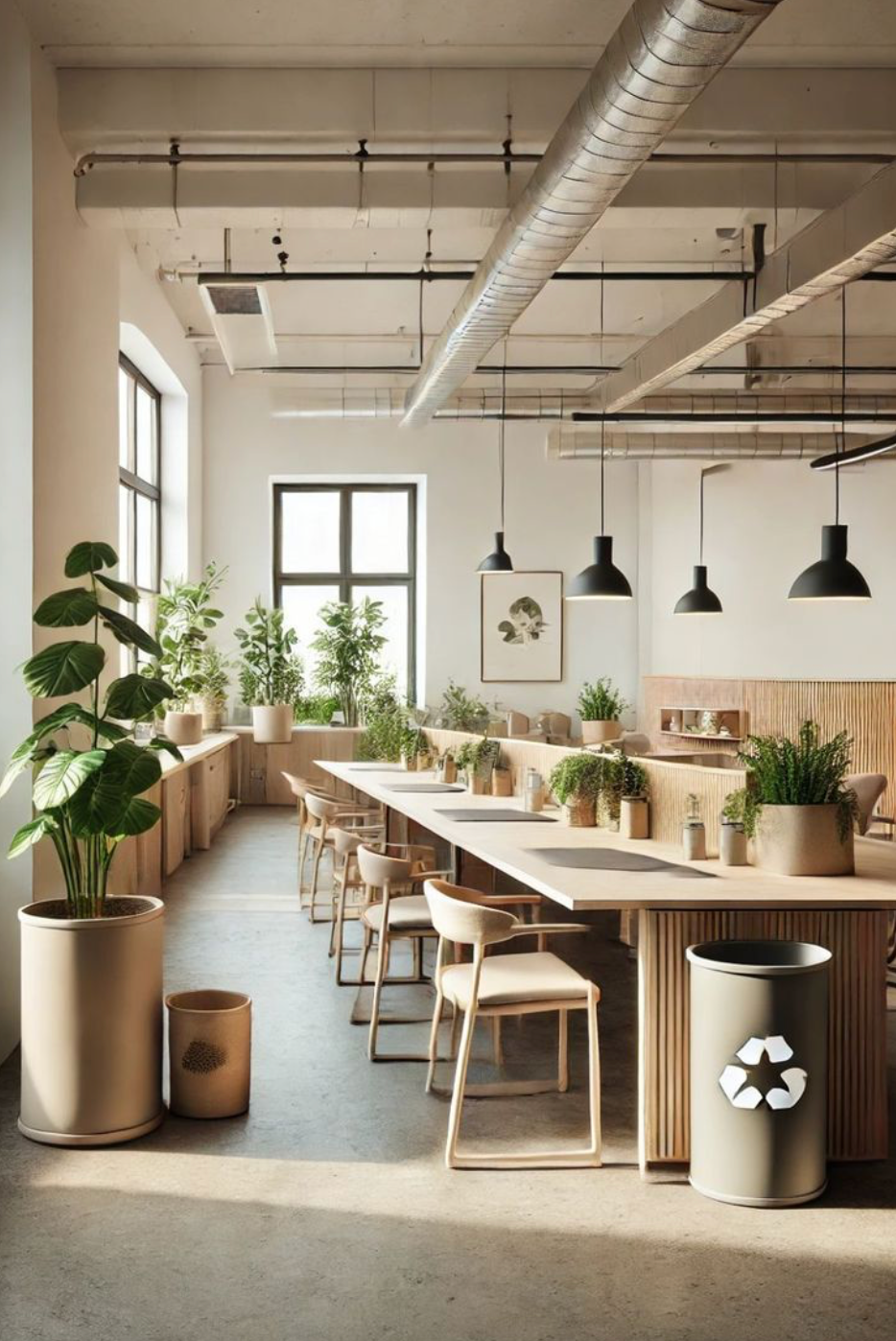Eco-Friendly Strategies for Cost-Effective Office Design
- Fay Wong
- Jun 3
- 3 min read
Designing an aesthetically pleasing and practical working environment need not compromise ecological sustainability or financial constraints.

As sustainability emerges as a paramount concern for enterprises, the implementation of environmentally conscious techniques can improve office aesthetics while benefiting the world. One of the most efficacious methods to accomplish this is by reusing materials and integrating second-hand office furniture into your workspace.
Sustainable techniques can facilitate the attainment of a professional and aesthetically pleasing office design while remaining budget-conscious.
Select Repurposed Furniture
Pre-owned furniture is an environmentally sustainable and economical choice for furnishing your office. Premium pre-owned desks, seats, and storage units can be acquired at a significantly reduced cost compared to new furniture, enabling businesses to economize without sacrificing aesthetic appeal.
Selecting reused office furniture diminishes the necessity for producing new things, so substantially reducing carbon emissions and resource utilization. Suppliers such as FIL Furniture provide an extensive selection of resilient, pre-owned alternatives designed for enterprises aiming to establish environmentally sustainable work environments.
2. Adopt Minimalism

Minimalism represents a pragmatic and aesthetic selection for contemporary workplaces. A minimalist approach diminishes the necessity for superfluous furniture and accessories, emphasizing practicality and simplicity.
This not only conserves financial resources but also fosters a cleaner, more organized workspace. Select multifunctional items that fulfill several roles, such as desks with integrated storage or modular furniture that can be reconfigured as required.
3. Develop a Circular Office Layout
Embracing a circular methodology in office design entails the reuse, recycling, and repurposing of resources whenever feasible. This encompasses furniture, décor, fixtures, and office supplies.
For example, wooden pallets can be used into wall shelving, or salvaged materials might be utilized for ornamental accents. A circular office design reduces waste and fosters a unified, environmentally sustainable look.
4. Integrate Natural Elements

Incorporating natural elements into the workspace significantly improves aesthetics and fosters sustainability. Potted plants enhance air quality and foster a tranquil environment.
Incorporate materials such as salvaged wood for desks or dividers to enhance the warmth and richness of your workstation. Natural illumination can be optimized by employing sheer curtains or strategically positioning mirrors to reflect sunlight, so diminishing the reliance on artificial lighting during daylight hours.
5. Renovate Pre-existing Furnishings
Rather than disposing of old furniture, contemplate renovating it to rejuvenate its appearance. A fresh coat of paint, modern upholstery, or minor repairs can convert dilapidated items into chic and practical enhancements for your office.
This method not only minimizes waste but also enables the customization of furniture to align with your office's distinctive design and branding.
6. Procure Locally
Procurement of workplace furniture and materials from local sources diminishes the carbon footprint linked to transportation. Local suppliers frequently offer a variety of second-hand and reused alternatives that are both economical and sustainable.
Moreover, collaborating with local enterprises bolsters the community and guarantees expedited delivery times, resulting in a mutually beneficial outcome.
7. Prioritize Energy Efficiency
Sustainability encompasses more than just furnishings. Implementing energy-efficient methods, such as utilizing LED lighting and energy-conserving equipment, can diminish operational expenses while conforming to your sustainability objectives.
Examine office configurations that enhance ventilation and natural illumination, so reducing energy use while fostering a healthier and more comfortable atmosphere for employees.
8. Select Enduring Designs
Investing in enduring furniture designs guarantees that your office will retain its elegance and utility for years ahead. Timeless garments are less prone to obsolescence, hence diminishing the necessity for regular substitutions and minimizing waste.
Pre-owned furniture frequently comprises resilient, expertly constructed pieces that endure throughout time, providing both sustainability and dependability.
A Sustainable Work Environment
Sustainable methods not only benefit the environment but also provide businesses economical ways for designing aesthetically pleasing and productive workplace environments. Incorporating second-hand furniture, refinishing old objects, and adopting minimalist designs can create an environmentally responsible workspace that embodies your ideals. Adopting these principles enables the creation of an office that is both cost-effective and innovative, positively influencing your enterprise and the environment.










Comments